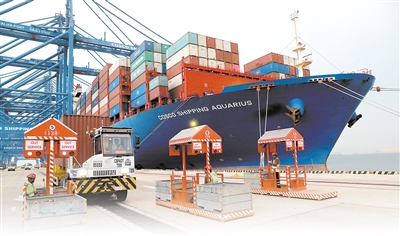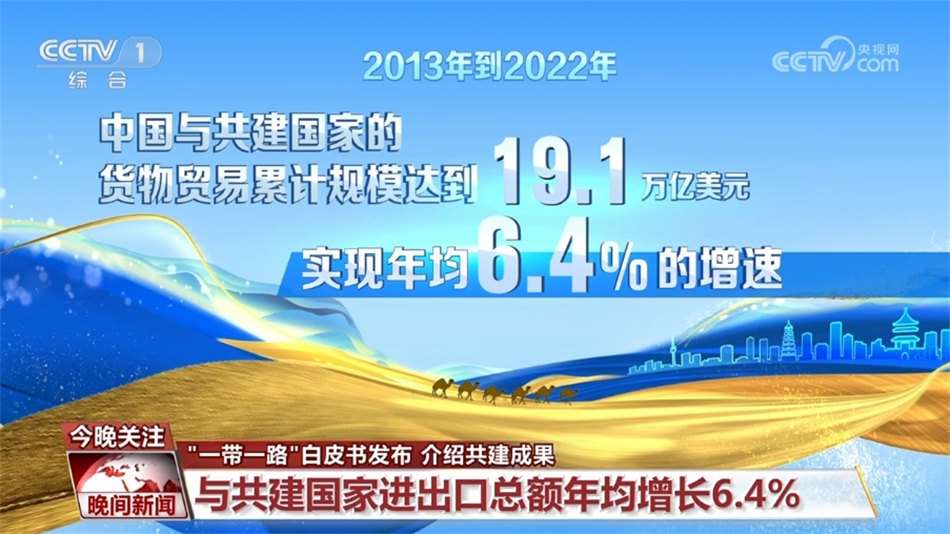Former Malaysian Minister: "Small Multilateral" Is Better Than "big And Complete", And China-ASEAN Communist Party Faces Challenges
Former Malaysian Minister: "Small Multilateral" Is Better Than "big And Complete", And China-ASEAN Communist Party Faces Challenges
The current multilateral international order is in danger of failure. The United States tried to use the situation in the South China Sea to exaggerate the "China threat theory" and alienate China's relations with the international community, especially with ASEAN, but failed to prevent China from continuing to expand its regional influence.
The current multilateral international order is in danger of failure. The United States tried to use the situation in the South China Sea to exaggerate the "China threat theory" and alienate China's relations with the international community, especially with ASEAN, but failed to prevent China from continuing to expand its regional influence. China and ASEAN have carried out extensive cooperation in areas such as economy and trade, security, and green transformation, which is in line with ASEAN's own development vision. Faced with the pressure from the United States and geopolitical games, China and ASEAN should establish a more complete functional multilateral mechanism, especially flexible and pragmatic small multilateral cooperation to adapt to the diverse demands of all parties.

Author: Ong Tee Keat
Former Minister of Transport of Malaysia and President of the Asia-Pacific "Belt and Road" Co-profit Association
On the occasion of commemorating the 80th anniversary of the end of World War II, "American Peace" (Pax) is clearly in a significant decline. Those multilateral mechanisms originally established to serve the interests of victorious countries after the war are now dysfunctional, further exposing the chaos and incoherence of the global order. At least, this system is already out of touch with the current global trend of multipolarization.
The "Global South" countries are increasingly bold in expressing their concerns and vision through the "BRICS " platform, and China, the largest economy among developing countries, has also inspired the world with its unique development template. Through the Belt and Road Initiative, China has promoted the process of global connectivity and won widespread support from more than 150 countries and more than 30 international organizations, although this process has been constantly slandered and suppressed by Western countries.
Over the past decade, China has actively expanded its role in global connectivity and multilateral cooperation through initiatives such as the Belt and Road Initiative. Faced with China's wide "charming offensive", the United States exaggerated China's position on core interests as a "threat" in an attempt to isolate China, especially to create rifts between its most important trading partner, ASEAN.
Against this backdrop, territorial disputes in some South China Sea areas have been maximized by the United States. As a distant and non-direct interest extraterritorial country, the United States and its allies continue to carry out so-called "freedom of navigation operations" in the South China Sea, frequently sending warships into the sea to show off their military power. However, this international waterway, which undertakes about one-third of the world's maritime logistics, has always been unimpeded.
The military deterrence demonstrated by the United States and its allies through the "Free Navigation Operation" is obviously part of its traditional security "repert" to contain China. This may meet the needs of some regional countries to "held psychologically", but it has not worked in curbing China's expansion of its influence in the region.
At the same time, the China-ASEAN partnership continues to deepen. The negotiations on the 3.0 version of the China-ASEAN Free Trade Zone have been completed. The new version of the agreement will include emerging economic momentum such as digital economy, green transformation and e-commerce, and are expected to push the economic agendas of both sides to a new height of more sustainable level.
With the release of "ASEAN Community Vision 2045" in May 2025, ASEAN not only sets itself a long-term development blueprint for resilience, innovation, vitality and people-oriented by 2045, but also clearly states that it is necessary to build a regional security architecture to deal with increasingly diversified non-traditional security threats. Such security considerations do not mean that security agreements must be signed with major foreign countries or deploy foreign military forces and equipment in the region, but rather are closer to the local concerns emphasized in the ASEAN Political Security Community Blueprint.
Therefore, for ASEAN countries, the more critical thing is how to correctly set priorities and focus on responding to crises such as food, energy, security and climate change, as well as emergency challenges such as transnational terrorism, crime and public health. Like other emerging economies in the Global South, ASEAN is generally limited by insufficient resources and technical capabilities.

This is a tin pit (drone photo) in the Neida River Valley area of Perak, Malaysia, taken on March 11. Photo by Xinhua News Agency reporter Cheng Yiheng
Taking agriculture as an example, ASEAN is increasingly unsustainable in meeting the growing population's food demand. Despite strong overall GDP growth, millions of people in the region still face malnutrition. Climate change has further exacerbated this threat, and if left uncontrolled, it is expected to cause a 11% decline in regional GDP by 2100. What's more serious is that this may cause about 87 million people to be forced to migrate due to high-risk factors such as floods, especially in countries such as Indonesia, Malaysia, Myanmar, Thailand and Vietnam.
In this situation, a strong China-ASEAN partnership itself is a strategic advantage. ASEAN can leverage China's strong technical capabilities and the alternative multilateral development financing resources it provides to alleviate the above urgent security challenges.
From the perspective of most countries around the world, especially ASEAN, China-driven new development banks and Asian infrastructure investment banks are valuable tools to fill the development deficit. These two multilateral development banks are becoming feasible alternative mechanisms outside the World Bank and the International Monetary Fund, which can more effectively respond to the development needs of the "Global South". The local currency loan mechanism launched by the New Development Bank just meets the urgent need for local currency financing in the "Global South". Although Trump has threatened to impose 100% tariffs on the use of non-dollar settlements in the BRICS countries, this has not stopped emerging economies from exploring the trend of "de-dollarization".
In April 2025, Trump unexpectedly announced the imposition of so-called "reciprocal tariffs" on several countries. On the one hand, this policy has caused chaos in the global free trade system with the World Trade Organization as its core, and has also caused rifts in the relationship between the United States and its allies and competitors. On the other hand, he also insisted on conducting bilateral negotiations with countries affected by tariffs, especially ASEAN member states that were severely hit, in order to exert more "coercion" on relevant countries. At the same time, he proposed to Malaysia as the rotating presidency of ASEAN to convene the ASEAN-US summit, but remained silent, which further exacerbated the uncertainty.
Against this uncertainty, ASEAN adheres to the regional dominance of "ASEAN-centered" and the "helding strategy" that maintains neutrality in the geopolitical game between China and the United States are facing increasingly greater challenges. The free space for normal trade with countries that the United States considers to be "adversaries" may also be further compressed.
In order to cope with this severe test, China and ASEAN should consider strengthening cooperation in multiple dimensions and promoting more functional small multilateral mechanisms, which can learn from the China-led Lancang-Mekong Cooperation Mechanism to meet common challenges. This type of "small multilateral" mechanism is not biased towards a certain ASEAN member state, but is to take into account the differentiated reality of each member state in emergency response, resource preparation and priorities.
Taking the Lancang-Mekong Cooperation Mechanism as an example, it belongs to "subregional small multilateral cooperation", and participants include China and Cambodia, Laos, Myanmar, Thailand and Vietnam along the Mekong River. Practice shows that small multilateral mechanisms are often more pragmatic and efficient than large multilateral mechanisms with full participation, especially when facing emergency security matters. Due to the different interests of different countries and the priorities of diverse concerns, reaching consensus is often lengthy, but the opportunity to effectively respond to the challenges of immediate crises is fleeting.
As a comprehensive strategic partner of China and the United States, ASEAN should not be overly worried about being labeled as "inclined toward one party" by the outside world. Through balanced interaction with China and the United States in the field of development cooperation and value co-creation, ASEAN can avoid falling into the trap of "zero-sum game".
After all, as the Western proverb says, "If you eat it, you will know whether the pudding is good or not." Verifying the pros and cons of the choice can never avoid the evaluation of "effectiveness". After all, it is the most important thing to contribute to the well-being of ASEAN 680 million people.





